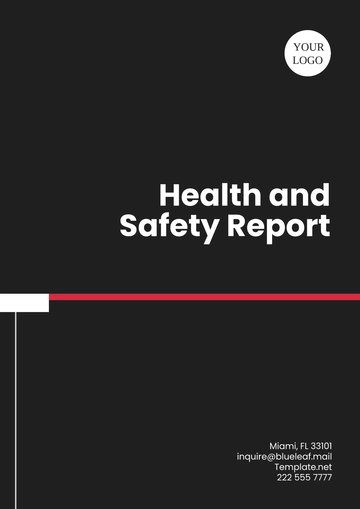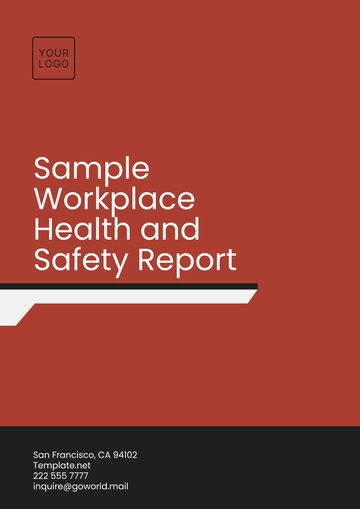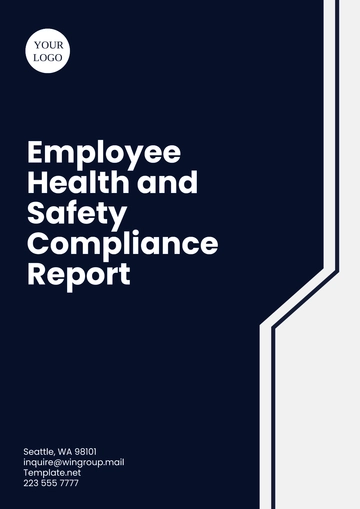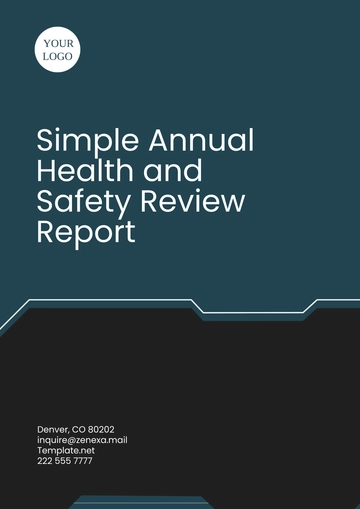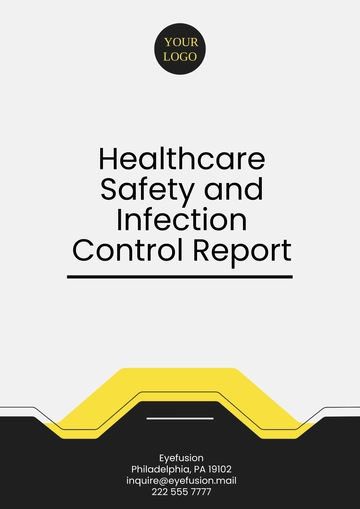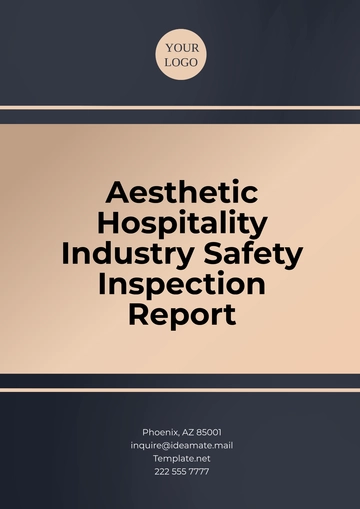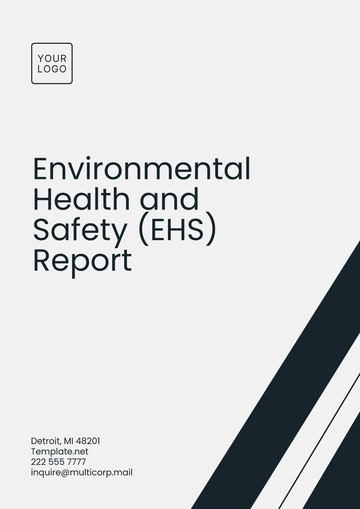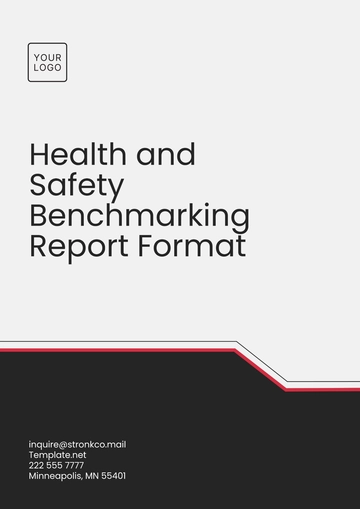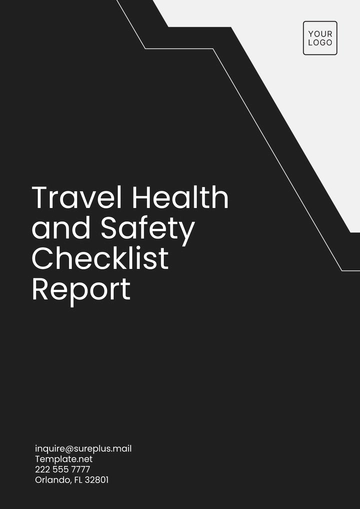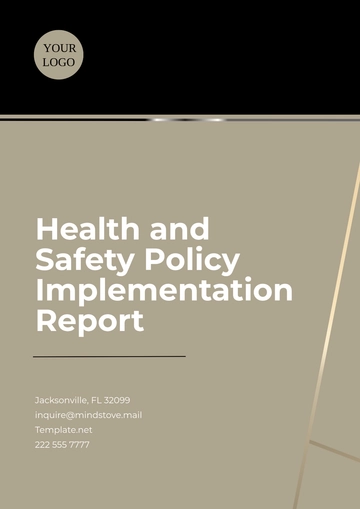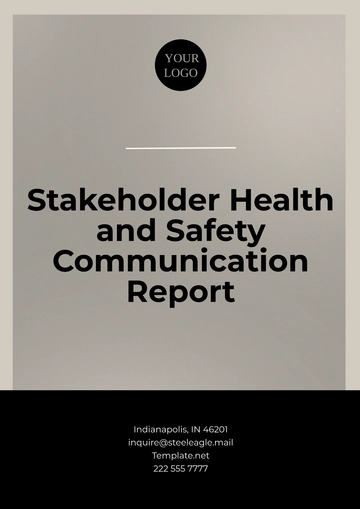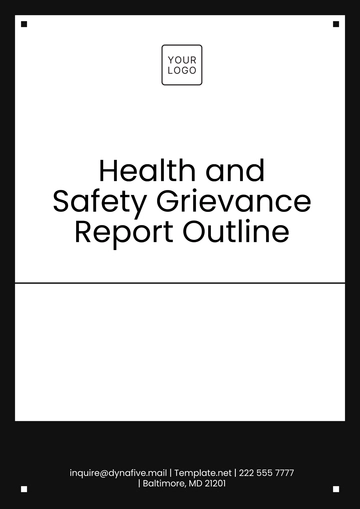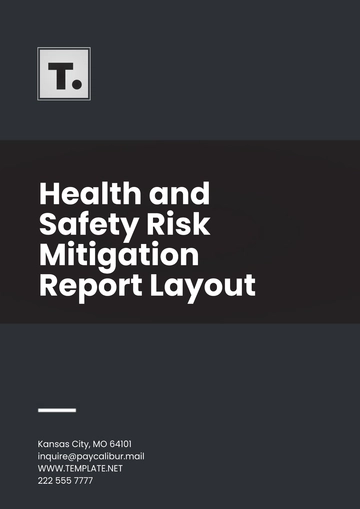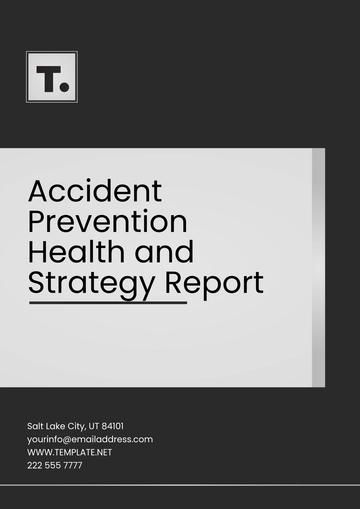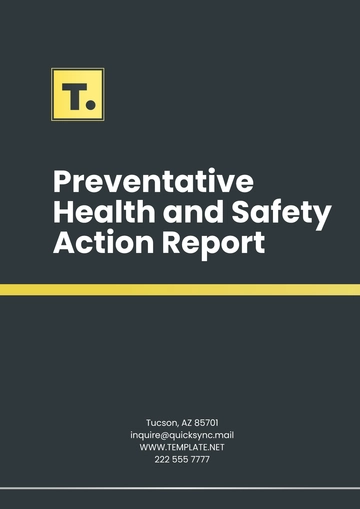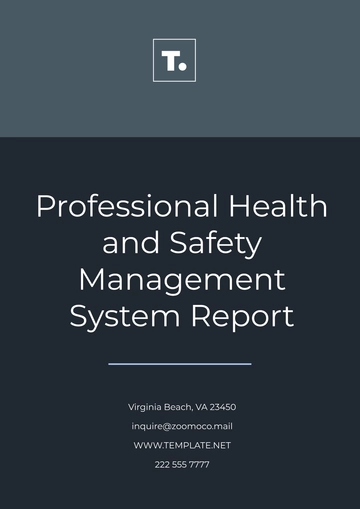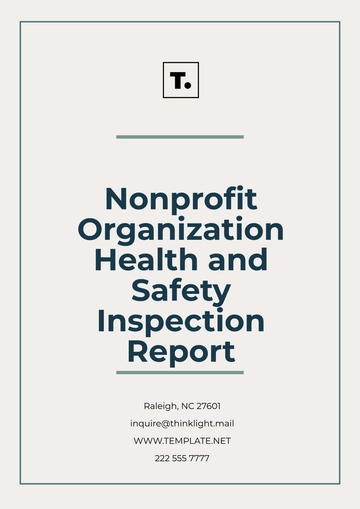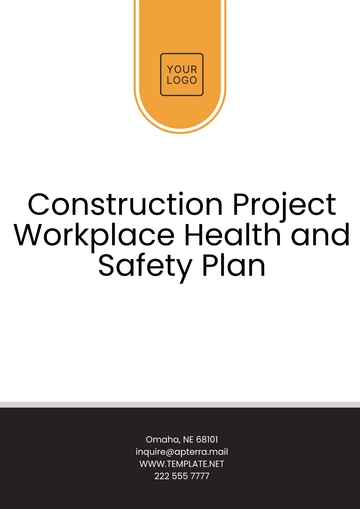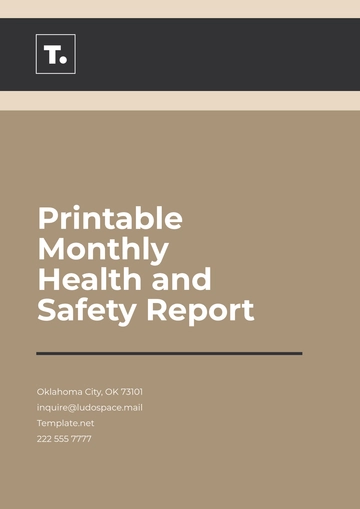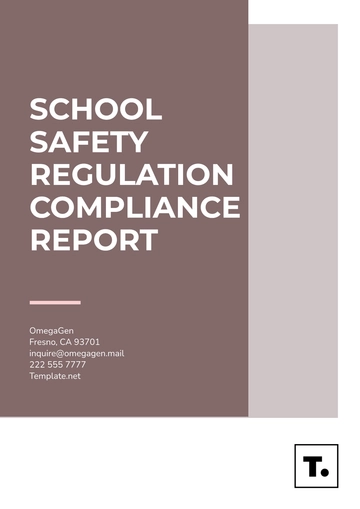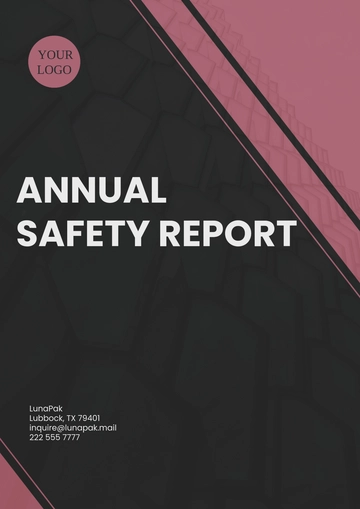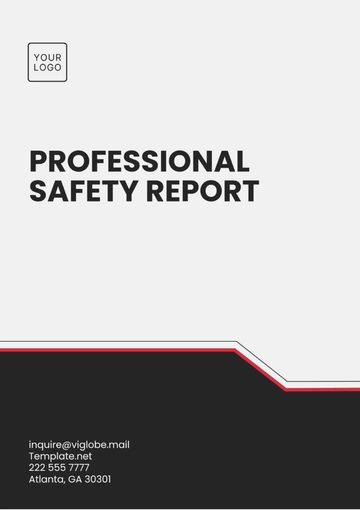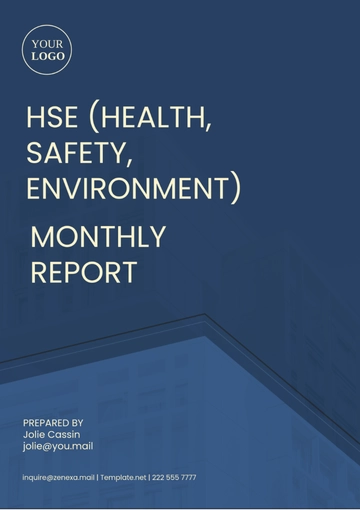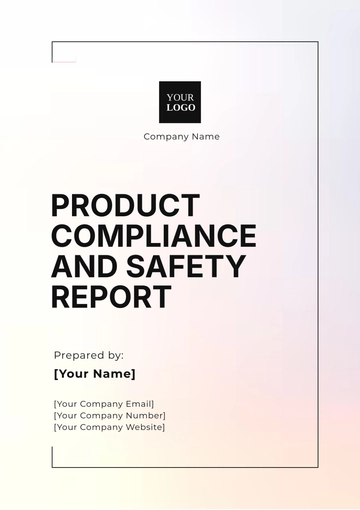Free School Safety Report
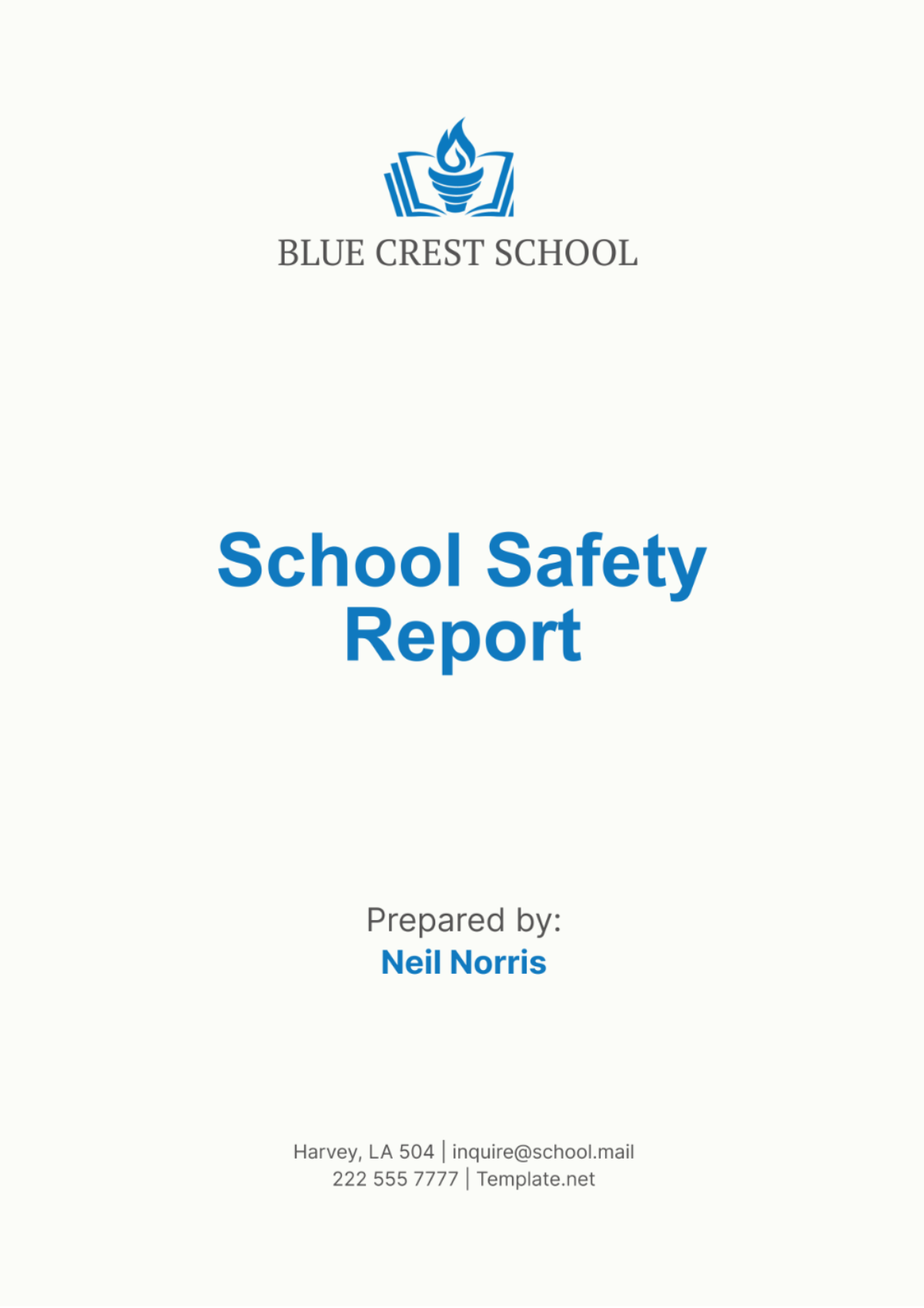
I. Introduction
The objective of this School Safety Report is to provide a comprehensive overview of the current safety measures and protocols in place at [Your Company Name]. The report aims to assess the effectiveness of these measures, identify potential safety risks, and recommend improvements to ensure a safe learning environment for all students, staff, and visitors. Specific areas of focus include emergency preparedness, building security, health and hygiene standards, and incident reporting procedures.
This report also evaluates compliance with local and national safety regulations. By addressing these key areas, the report seeks to enhance the overall safety culture within the school. The ultimate goal is to foster a secure, supportive, and conducive environment for education.
II. Safety Measures and Protocols
This section provides an in-depth analysis of the safety measures and protocols currently in place at [Your Company Name]. It covers emergency preparedness, building security, and health and hygiene standards, crucial for maintaining a safe environment within the school premises.
A. Emergency Preparedness
Overview of current emergency preparedness plans, including evacuation procedures, lockdown drills, and communication strategies during emergencies.
Aspect | Description |
|---|---|
Evacuation Procedures | Clear evacuation routes are posted in all classrooms and common areas. Regular drills are conducted to ensure familiarity with evacuation procedures, with 95% of staff and students participating and 100% of drills conducted according to schedule. Designated assembly points outside the building ensure accountability. |
Lockdown Drills | Lockdown drills are conducted twice per semester, with 100% participation. Different scenarios are simulated to ensure preparedness for various threats. Communication systems are tested during drills to assess their efficiency, achieving a 98% success rate. |
Communication Strategies | A mass notification system is in place, capable of sending alerts via SMS, email, and PA system, with a 99% success rate. Regular communication drills are conducted, and emergency contact information is collected and updated annually, ensuring 100% accuracy. |
B. Building Security
Description of security measures such as surveillance systems, access control, and security personnel.
Aspect | Description |
|---|---|
Surveillance Systems | CCTV cameras strategically cover 100% of entrances, hallways, and other critical areas, with 24/7 monitoring both on-site and remotely. Recordings are stored for a minimum of 30 days, with a 99% system uptime. Cameras undergo regular maintenance and testing, ensuring 98% functionality. |
Access Control | Access is restricted to authorized personnel through key cards or biometric systems, with 100% compliance. The visitor sign-in process requires identification and purpose of visit, adhering to the protocol. Regular audits are conducted, ensuring 100% compliance with access control policies. |
Security Personnel | 10 security personnel are employed, covering all shifts and areas. Their roles include patrolling premises, monitoring surveillance systems, and responding to incidents, with 100% compliance to protocols. Annual training is provided on emergency response, conflict resolution, and customer service, with 100% attendance. |
C. Health and Hygiene Standards
Assessment of cleanliness protocols, availability of sanitation facilities, and measures to prevent the spread of infectious diseases.
Aspect | Description |
|---|---|
Cleanliness Protocols | Cleaning schedules are established for daily, weekly, and monthly tasks, with 100% adherence. EPA-approved disinfectants are used for high-touch surfaces and equipment, with 100% compliance. Custodial staff are trained on proper cleaning techniques and safety protocols, with 100% completion rate for training. |
Sanitation Facilities | Hand sanitizers are placed at entrances, classrooms, and other high-traffic areas, with 100% availability. Soap, paper towels, and tissues are adequately supplied in restrooms and common areas, with 100% availability. Facilities undergo regular maintenance to ensure functionality and cleanliness, with 100% completion of maintenance tasks. |
Disease Prevention Measures | Compliance with state and local vaccination requirements is at 100% for both students and staff. Health screenings are conducted for students and staff, with 100% participation and reporting of symptoms. Health education programs are implemented to promote good hygiene practices and disease prevention, with 100% participation from students and staff. |
D. Incident Reporting Procedures
Review of the procedures in place for reporting and addressing safety incidents and concerns.
Aspect | Description |
|---|---|
Incident Reporting Awareness | 100% of staff and students are aware of the incident reporting procedures, with regular training provided to ensure understanding. |
Monthly Incident Volume | On average, 20 incidents are reported per month, including minor accidents, safety hazards, and behavioral concerns. |
Timeliness of Reporting | 95% of reported incidents are documented within 24 hours of occurrence, ensuring timely response and follow-up. |
Review and Action | Incident reports are reviewed by the safety committee weekly, with 80% of reports leading to corrective or preventive actions. |
Implementation of Actions | 90% of corrective actions are implemented within one week of the incident, reducing the risk of recurrence and improving overall safety. |
Trend Analysis | Annual audits of incident reports are conducted to identify trends and areas for improvement, leading to a 10% reduction in incident rates year over year. |
III. Risk Assessment
This section identifies potential safety risks within the school, covering risks related to physical infrastructure, environmental hazards, and human factors. Risks are categorized as high, medium, or low priority based on their potential impact on safety and the school community.
Aspect | Description |
|---|---|
Physical Infrastructure Risks | Structural issues such as weak foundations, aging buildings, or inadequate maintenance are identified as high-risk, requiring immediate attention. Medium-risk infrastructure risks include faulty electrical wiring or plumbing issues that could lead to safety hazards if not addressed promptly. Low-risk infrastructure risks may include minor cosmetic damages that do not pose an immediate threat but should be monitored for potential escalation. |
Environmental Hazards | High-risk environmental hazards such as asbestos or mold infestations are identified, requiring specialized remediation. Medium-risk environmental hazards may include poor indoor air quality or inadequate ventilation systems. Low-risk environmental hazards like uneven flooring or poor lighting are noted as potential safety concerns that should be addressed to prevent accidents. |
Human Factors Risks | High-risk human factors include inadequate staff training or insufficient supervision, which could lead to safety lapses. Medium-risk factors may include understaffing or fatigue among staff, increasing the likelihood of errors. Low-risk human factors could include minor misconduct or non-compliance with safety protocols that can be addressed through training and enforcement measures. |
Risk Prioritization | Risks are prioritized based on their potential impact and likelihood of occurrence. High-priority risks require immediate action to mitigate, while medium-priority risks should be addressed in a timely manner to prevent escalation. Low-priority risks, while less urgent, should still be monitored and managed to maintain a safe environment. |
IV. Compliance and Regulations
This section evaluates the school's adherence to local, state, and national safety regulations, including findings from recent safety audits and inspections.
Aspect | Description |
|---|---|
Local Regulations | Compliance with local safety regulations, including building codes and zoning requirements. Recent safety audits and inspections conducted by local authorities highlighted 2 areas of non-compliance, related to emergency exit signage and fire extinguisher maintenance. Actions taken by the school include installing new emergency exit signage and scheduling regular maintenance for fire extinguishers. The school plans to conduct quarterly inspections to ensure continued compliance. |
State Regulations | Adherence to state safety regulations related to education facilities and student safety is at 98%, with minor issues identified in staff training records. Recent state-level safety audits highlighted the need for updated training documentation for 2% of staff. The school has implemented a new training program and is in the process of updating records. Ongoing compliance with state regulations is monitored through monthly audits, with a 95% compliance rate achieved in the latest audit. |
National Regulations | Compliance with national safety standards and regulations is at 99%, with full compliance achieved in all but one area related to playground equipment maintenance. Recent national-level safety audits identified the playground maintenance issue and recommended immediate action. The school has initiated a playground maintenance program and is on track to achieve full compliance within the next month. Plans are in place for regular inspections and maintenance to ensure continued compliance with national regulations. |
Safety Audits and Inspections | Safety audits and inspections are conducted annually, with the most recent audit conducted last month. The audit identified 5 areas for improvement, including updating emergency response plans and conducting staff training on new safety procedures. Recommendations from the audit are being implemented, with 80% of actions completed within the first week. A follow-up audit is scheduled for next month to ensure all recommendations have been addressed. |
Compliance Action Plan | An action plan has been developed to address the findings from recent audits and inspections. The plan includes timelines for completing each action item, responsible parties, and progress tracking. To date, 60% of the action plan has been completed, with the remaining items on track for completion within the next 3 months. Challenges faced include resource constraints and scheduling conflicts, which are being addressed through prioritization and coordination efforts. |
Follow-up and Monitoring | Procedures are in place for monitoring compliance with safety regulations on an ongoing basis. Monthly audits are conducted to ensure continued compliance, with a 95% compliance rate achieved in the latest audit. Results of audits are reviewed by the safety committee, which meets quarterly to discuss findings and progress on action items. Modifications to the compliance action plan are made based on audit findings and discussed at safety committee meetings. Lessons learned are documented and shared with staff to improve safety practices and prevent future issues. |
V. Recommendations and Action Plan
Based on the findings from the previous sections, this part offers actionable recommendations to enhance school safety. It should include short-term and long-term goals, resources needed, and a timeline for implementation. The action plan must align with the school's mission to provide a safe learning environment.
Aspect | Description |
|---|---|
Short-Term Goals | Conduct a comprehensive safety training session for all staff within the next month to review emergency procedures and reinforce safety protocols. |
Install additional security cameras in high-traffic areas such as hallways and entrances within the next two weeks to enhance monitoring capabilities. | |
Review and update emergency response plans to include specific protocols for different types of emergencies within the next month to ensure readiness. | |
Long-Term Goals | Implement a regular safety audit schedule to conduct quarterly audits and inspections to identify and address potential safety hazards. |
Develop and implement a student safety education program to educate students on safety practices and emergency procedures within the next academic year. | |
Enhance building security by implementing access control measures and upgrading security systems over the next two years to improve overall safety. | |
Resources Needed | Safety training materials and resources for staff. |
Additional security cameras and monitoring equipment. | |
Expert consultation for updating emergency response plans. | |
Educational materials for student safety education program. | |
Funds for building security upgrades and access control measures. | |
Timeline for Implementation | Safety training session for all staff: within the next month. |
Installation of additional security cameras: within the next two weeks. | |
Review and update of emergency response plans: within the next month. | |
Regular safety audit schedule: starting within the next quarter. | |
Implementation of student safety education program: within the next academic year. | |
Building security upgrades: over the next two years. | |
Alignment with School's Mission | Ensure that all recommendations align with the school's mission to provide a safe learning environment for students and staff. |
Incorporate safety education and training into the school's curriculum and culture. | |
Seek feedback from the school community to ensure that safety measures are effective and meet the needs of students, staff, and parents. | |
Continuously review and update safety policies and procedures to reflect best practices and evolving safety needs. |
VI. Conclusion
This report has delved into various aspects of safety measures and protocols at [Your Company Name], highlighting strengths and areas for improvement. The thorough evaluation of emergency preparedness, building security, health and hygiene standards, incident reporting procedures, compliance, and regulations has provided a comprehensive overview of the school's safety landscape. Moving forward, it is imperative that the school remains vigilant and proactive in addressing safety concerns.
[Your Company Name] remains committed to providing a safe and secure environment for education. As such, continuous efforts will be made to enhance safety measures, including regular safety audits, staff training, and infrastructure upgrades. By prioritizing safety and implementing the recommendations outlined in this report, [Your Company Name] will continue to uphold its mission of ensuring a safe and conducive learning environment for all students, staff, and visitors.
For further information or inquiries, please contact the report preparer:
[Your Name]
Email: [Your Email]
- 100% Customizable, free editor
- Access 1 Million+ Templates, photo’s & graphics
- Download or share as a template
- Click and replace photos, graphics, text, backgrounds
- Resize, crop, AI write & more
- Access advanced editor
Ensure student safety with Template.net's School Safety Report Template. This fully customizable and editable template helps you create comprehensive reports efficiently. Editable in our AI Editor Tool, it guarantees ease and precision. Start documenting effectively today and make school safety a priority. Engage seamlessly and showcase your commitment to security with our professional template.
You may also like
- Sales Report
- Daily Report
- Project Report
- Business Report
- Weekly Report
- Incident Report
- Annual Report
- Report Layout
- Report Design
- Progress Report
- Marketing Report
- Company Report
- Monthly Report
- Audit Report
- Status Report
- School Report
- Reports Hr
- Management Report
- Project Status Report
- Handover Report
- Health And Safety Report
- Restaurant Report
- Construction Report
- Research Report
- Evaluation Report
- Investigation Report
- Employee Report
- Advertising Report
- Weekly Status Report
- Project Management Report
- Finance Report
- Service Report
- Technical Report
- Meeting Report
- Quarterly Report
- Inspection Report
- Medical Report
- Test Report
- Summary Report
- Inventory Report
- Valuation Report
- Operations Report
- Payroll Report
- Training Report
- Job Report
- Case Report
- Performance Report
- Board Report
- Internal Audit Report
- Student Report
- Monthly Management Report
- Small Business Report
- Accident Report
- Call Center Report
- Activity Report
- IT and Software Report
- Internship Report
- Visit Report
- Product Report
- Book Report
- Property Report
- Recruitment Report
- University Report
- Event Report
- SEO Report
- Conference Report
- Narrative Report
- Nursing Home Report
- Preschool Report
- Call Report
- Customer Report
- Employee Incident Report
- Accomplishment Report
- Social Media Report
- Work From Home Report
- Security Report
- Damage Report
- Quality Report
- Internal Report
- Nurse Report
- Real Estate Report
- Hotel Report
- Equipment Report
- Credit Report
- Field Report
- Non Profit Report
- Maintenance Report
- News Report
- Survey Report
- Executive Report
- Law Firm Report
- Advertising Agency Report
- Interior Design Report
- Travel Agency Report
- Stock Report
- Salon Report
- Bug Report
- Workplace Report
- Action Report
- Investor Report
- Cleaning Services Report
- Consulting Report
- Freelancer Report
- Site Visit Report
- Trip Report
- Classroom Observation Report
- Vehicle Report
- Final Report
- Software Report
